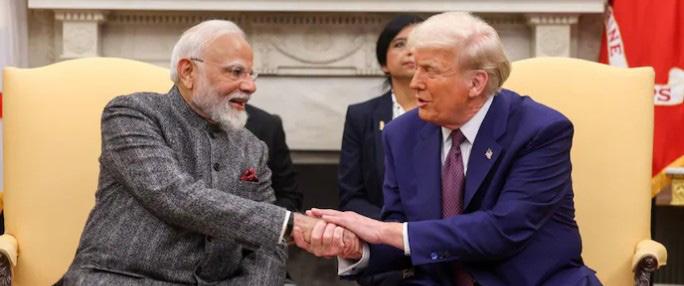
3 minute read
Modi’s US visit: Resetting ties amid global tensions
From the editor’s desk
India’s Prime Minister Narendra Modi’s recent visit to the United States came at a critical juncture for India’s foreign policy.
Over the past few years, New Delhi’s ties with Washington had strained under the Biden administration, primarily due to differences on human rights, trade policies, and India’s independent stance on global conflicts. Adding to this was India’s deteriorating relationship with Canada, which accused the Indian government of involvement in the killing of a Sikh separatist leader. Against this backdrop, Modi’s visit was more than just a diplomatic formality—it was an attempt to reset relations with a key global power while reaffirming India’s strategic autonomy.
One of the most significant outcomes of this visit was the shift in tone from the United States. Under President Joe Biden, U.S.-India relations had grown tense, with Washington frequently raising concerns about democratic backsliding and minority rights in India. However, the recent change in leadership in the U.S. saw a clear pivot in approach, with the focus shifting from criticism to cooperation. Modi’s visit underscored the growing realization in Washington that India remains an indispensable partner in global geopolitics, particularly in countering China’s expanding influence in the Indo-Pacific region.
Trade and defense cooperation took center stage during the visit. India and the U.S. agreed to revive stalled trade negotiations and explore new avenues for economic partnership. While India seeks greater access to American technology and markets, the U.S. is keen on strengthening its supply chain diversification by reducing dependence on China. Defense agreements, including discussions on advanced military technology transfers and joint defense production, signal a deeper commitment to strategic collaboration. The willingness of the U.S. to expedite defense deals, including the possibility of co-producing fighter jet engines in India, indicates a significant shift in its approach to India as a military partner.
Equally important was the renewed emphasis on intelligence sharing and counterterrorism efforts. India has faced increasing hostility from Canada over the Khalistani issue, with Prime Minister Justin Trudeau openly accusing India of extrajudicial actions on Canadian soil. The U.S. had initially taken a cautious stance, balancing its relations with both allies. However, Modi’s visit seems to have reinforced India’s position that terrorism and separatism cannot be tolerated under the guise of free speech and democratic rights.
Washington’s subtle change in tone suggests a recognition that its long-term interests align more closely with India than with Trudeau’s politically motivated accusations.
Energy cooperation and technology partnerships also featured prominently in Modi’s discussions. India’s push for clean energy aligns with America’s green transition goals, leading to agreements on renewable energy investments and joint research on hydrogen technology. The visit also saw renewed interest from major American corporations in India’s semiconductor and AI industries, reinforcing India’s role in the global tech supply chain.
While the visit marked a diplomatic success for Modi, challenges remain. The U.S. is still cautious about India’s close ties with Russia, particularly its reluctance to distance itself from Moscow amid the Ukraine war. Additionally, trade disputes over tariffs and market access continue to be sticking points.
For Modi, the challenge lies in ensuring that this renewed warmth in Indo-US ties translates into tangible long-term gains rather than just diplomatic optics.
Modi’s visit to the U.S. was not just about strengthening bilateral relations—it was about signaling India’s growing role as a key global player. With shifting global alliances, India has positioned itself as a balancing force between great powers. The visit reasserted India’s diplomatic weight while ensuring that its interests remain safeguarded in an increasingly complex geopolitical landscape.
The coming months will determine how effectively both nations translate this renewed engagement into sustained strategic cooperation.










